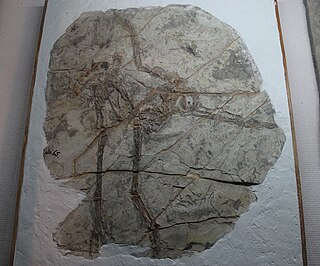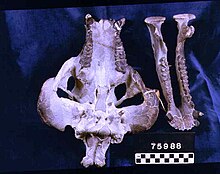
The Marshall Plan was an American initiative enacted in 1948 to provide foreign aid to Western Europe. The United States transferred $13.3 billion in economic recovery programs to Western European economies after the end of World War II. Replacing an earlier proposal for a Morgenthau Plan, it operated for four years beginning on April 3, 1948, though in 1951, the Marshall Plan was largely replaced by the Mutual Security Act. The goals of the United States were to rebuild war-torn regions, remove trade barriers, modernize industry, improve European prosperity and prevent the spread of communism. The Marshall Plan proposed the reduction of interstate barriers and the economic integration of the European Continent while also encouraging an increase in productivity as well as the adoption of modern business procedures.
Marbury v. Madison, 5 U.S. 137 (1803), was a landmark U.S. Supreme Court case that established the principle of judicial review in the United States, meaning that American courts have the power to strike down laws and statutes they find to violate the Constitution of the United States. Decided in 1803, Marbury is regarded as the single most important decision in American constitutional law. The Court's landmark decision established that the U.S. Constitution is actual law, not just a statement of political principles and ideals. It helped define the boundary between the constitutionally separate executive and judicial branches of the federal government.

George Catlett Marshall Jr. was an American army officer and statesman. He rose through the United States Army to become Chief of Staff of the U.S. Army under Presidents Franklin D. Roosevelt and Harry S. Truman, then served as Secretary of State and Secretary of Defense under Truman. Winston Churchill lauded Marshall as the "organizer of victory" for his leadership of the Allied victory in World War II. After the war, he spent a frustrating year trying and failing to avoid the impending Chinese Civil War. As Secretary of State, Marshall advocated for a U.S. economic and political commitment to post-war European recovery, including the Marshall Plan that bore his name. In recognition of this work, he was awarded the Nobel Peace Prize in 1953, the only Army general ever to be so honored.

Cowardice is a trait wherein excessive fear prevents an individual from taking a risk or facing danger. It is the opposite of courage. As a label, "cowardice" indicates a failure of character in the face of a challenge. One who succumbs to cowardice is known as a coward.

Marshallese, also known as Ebon, is a Micronesian language spoken in the Marshall Islands. Spoken by the ethnic Marshallese people, the language is spoken by nearly the country's entire population of 59,000, making it the principal language of the country. There are also roughly 27,000 Marshallese citizens residing in the United States, nearly all of whom speak Marshallese, as well as in other countries including Nauru and Kiribati.

Protarchaeopteryx is a genus of turkey-sized feathered theropod dinosaur from China. Known from the Jianshangou bed of the Yixian Formation, it lived during the early Aptian age of the Early Cretaceous, approximately 124.6 million years ago. It was probably a herbivore or omnivore, although its hands were very similar to those of small carnivorous dinosaurs. It appears to be one of the most basal members of the Oviraptorosauria, closely related to Incisivosaurus, or a taxon slightly less closely related to birds than oviraptorosaurs were.

Mesohippus is an extinct genus of early horse. It lived 37 to 32 million years ago in the Early Oligocene. Like many fossil horses, Mesohippus was common in North America. Its shoulder height is estimated at about 60 cm.

Herbert Brough Falcon Marshall was an English stage, screen, and radio actor who starred in many popular and well-regarded Hollywood films in the 1930s and 1940s. After a successful theatrical career in the United Kingdom and North America, he became an in-demand Hollywood leading man, frequently appearing in romantic melodramas and occasional comedies. In his later years, he turned to character acting.
There are a variety of pronunciations in modern English and in historical forms of the language for words spelled with the letter ⟨a⟩. Most of these go back to the low vowel of earlier Middle English, which later developed both long and short forms. The sound of the long vowel was altered in the Great Vowel Shift, but later a new long A developed which was not subject to the shift. These processes have produced the main four pronunciations of ⟨a⟩ in present-day English: those found in the words trap, face, father and square. Separate developments have produced additional pronunciations in words like wash, talk and comma.

Placodus was a genus of marine reptiles belonging to the order Placodontia, which swam in the shallow seas of the middle Triassic period. Fossils of Placodus have been found in Central Europe and China.

Brigadier General Samuel Lyman Atwood Marshall, also known as SLAM, was a military journalist and historian. He served with the American Expeditionary Forces in World War I, before becoming a journalist, specialising in military affairs.

Marshall Ambrose "Mickey" Neilan was an American actor, director, producer, and screenwriter, whose work in films began in the early silent era.

The Von Erich family is an American professional wrestling family. Originally from Texas, their actual surname is Adkisson, but every member who has been in the wrestling business has used the ring name "Von Erich," after the family patriarch, Fritz Von Erich. Jack took on the name as part of his wrestling gimmick as he originally portrayed a Nazi heel, hence his use of a German name.

Agriotherium is an extinct genus of bears whose fossils are found in Miocene through Pleistocene-aged strata of North America, Eurasia, and Africa. This long-lived genus persisted from at least ~11.6–2.5 Mya. Materials from the late-surviving A. africanum in Africa have suggested that A. africanum died out during the early Gelasian.

Ictitherium is an extinct genus belonging to the family Hyaenidae and the subfamily Ictitheriinae erected by Trouessart in 1897. Ictitherium species were endemic to Eurasia and Africa during the Middle Miocene through the Early Pliocene and existed approximately 7.4 million years.

Trogosus is an extinct genus of tillodont mammal. Fossils have been found in Wyoming, California, and British Columbia, and date from the Eocene between 54.8 and 33.7 million years ago. Trogosus was a bear-like herbivore with a large, short skull and flat feet, and had a skull 35 cm (14 in) long with an estimated body weight of 150 kg (330 lb). It had large, rodent-like incisors, which continued growing throughout the creature's life. Judging from the heavily worn molar teeth, Trogosus fed on rough plant material, such as roots and tubers.

Stylinodon is an extinct genus of taeniodont mammal, and is the best known, and last genus of taeniodonts, lived some 45 million years ago during middle Eocene in North America.

Notostylops is a genus of extinct South American ungulates from Eocene Argentina. Fossils of the genus have been found in the Sarmiento, Casamayor, Andesitas Huancache and Koluel Kaike Formations.

Merycochoerus is an extinct genus of oreodont of the family Merycoidodontidae, endemic to North America. They lived during the Early Oligocene 33.9—30.8 mya, existing for approximately 3 million years. Fossils are widespread through the western United States.

Thurgood Marshall was nominated to serve as an associate justice of the Supreme Court of the United States by U.S. President Lyndon B. Johnson on June 13, 1967 to fill the seat being vacated by Tom C. Clark. Per the Constitution of the United States, the nomination was subject to the advice and consent of the United States Senate, which holds the determinant power to confirm or reject nominations to the U.S. Supreme Court. Marshall was confirmed by the U.S. Senate in a 69–11 vote on August 30, 1967, becoming the first African American member of the Court, and the court's first non-white justice.




















